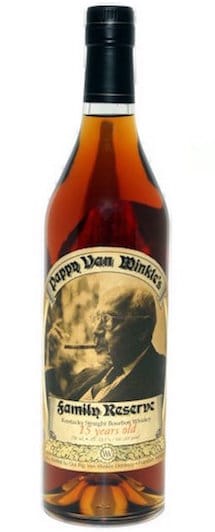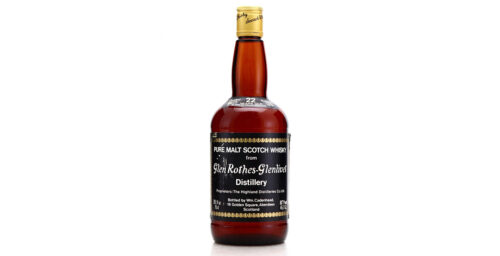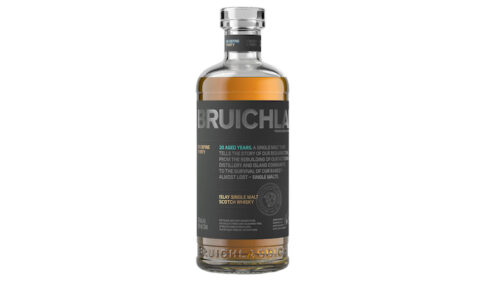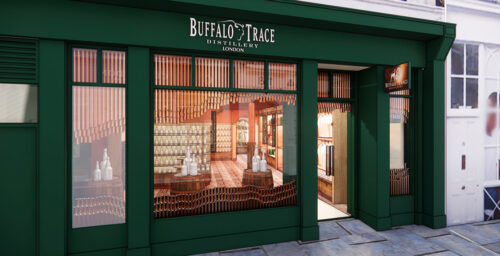
Thanks to the cult status of the Van Winkle line, bourbons made with wheat (“wheaters”) have skyrocketed in popularity over the last few years, although they’re still relatively rare. A quick definition: all bourbons are at least 51% corn, and the vast majority contain some small percentage of malted barley, which contributes enzymes that catalyze the conversion of grain starch to fermentable sugar.
The remainder of the mash bill is made up of what distillers call “the flavor grain,” which is usually rye – but sometimes, it’s wheat. If you’re interested, Steve Coombes did an excellent story about flavor grains for The Whiskey Wash earlier this year.
Other wheated bourbons include W.L. Weller (which is actually made from the same mash bill as Van Winkle), Larceny, and Barton 1792 Sweet Wheat, a special wheated release from the eponymous distillery. And, of course, the iconic Maker’s Mark. These days you can even reliably lay your hands on wheat whiskies, which are made with at least 51% wheat. Blanton’s, OYO, and Dry Fly all make whiskies made with anywhere from 51% to 100% wheat.
But what’s the deal with wheat? Why does a grain that many think of as literally synonymous with white bread make such great whiskey? The answer, like so many things, is a matter of taste. Do you like rye bread? I sure do, but it’s not the loaf I’d bring to a party where I wasn’t sure that my company felt the same way.
It’s the same story with bourbon. High-rye bourbons like Wild Turkey, Four Roses, and Elijah Craig tend to have a bolder, heavier, spicier note. Many people – myself included – love that. But many others prefer the softer, sweeter, fruitier flavor profile of wheat. (This is one reason Maker’s Mark is such a ubiquitous gateway bourbon.)
What’s really interesting about Pappy is that it’s one of the only bourbons to showcase how wheat behaves in the barrel for a long period of time. What first reads as light, fruity, and almost rum-like transforms into a decadent, rounded, tobacco-inflected balance between grain and barrel.
Oak contributes its own spice, and high-rye bourbon can inch towards overwhelmingly spicy after spending too many years in the barrel. Wheat, on the other hand, seems to lend more balance – but not always. Tasting through all five of these Van Winkle samples, I noticed a vacillation between dry, tannic, and spicy; and rich, rounded, and fruity. This release, the 15 year, skewed strongly towards dry and spicy.
Tasting Notes: Pappy Van Winkle 15 Year Old
Vital Stats: 107 proof, 15 years old
Nose: This smells like a night at the movie theater: candy corn, A&W Root Beer, popcorn, butter, shellac. There’s also some slightly hidden aromas of tropical fruit – pineapple, coconut, and orange peel. With water, the nose takes a totally unexpected turn, transforming into an herbaceous, pungently mossy aroma with notes of algae, unsmoked peat moss, chlorophyll, and live wood.
Palate: The initial flavors are tart and a little bitter – blood orange, citrus gastrique, dark chocolate, wheat bran. As the palate evolves, more of those classic aged bourbon flavors appear like warmed prunes, nutmeg, perique tobacco, stewed cherry, and pencil shavings.
Like the nose, with water things take a decidedly herbaceous turn, with surprising flavors of fennel, sage leaf, and crème de menthe. In a strange way, it reminds me of Chartreuse.
Conclusion:
Intense! This is the whiskey equivalent of a double IPA. Straight, it leaves the inside of my mouth feeling scoured. Water moved it in a totally distinct and strange direction that really worked for me. If this wasn’t so expensive, I’d drink it with soda water and I bet it could fool a few gin drinkers.






